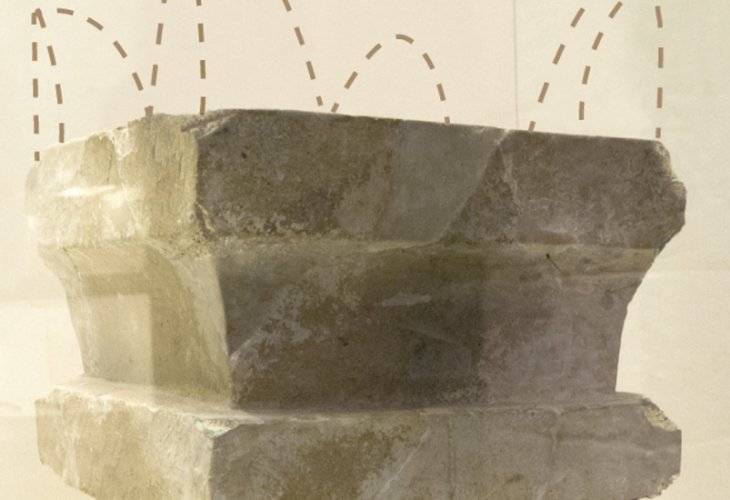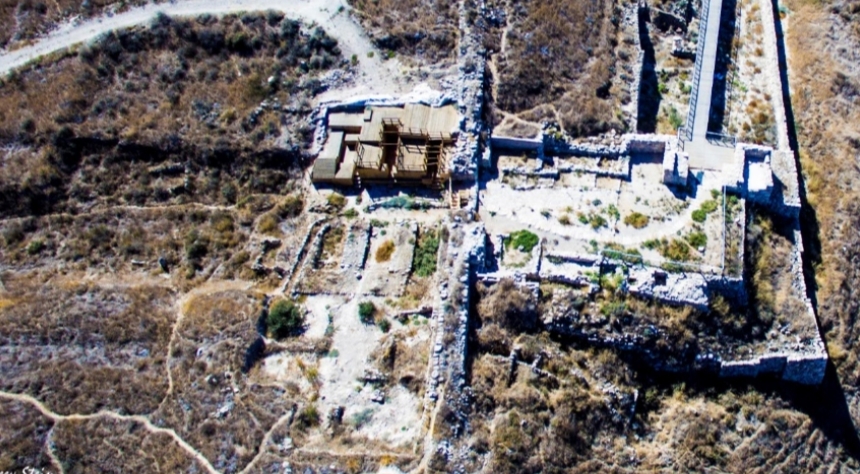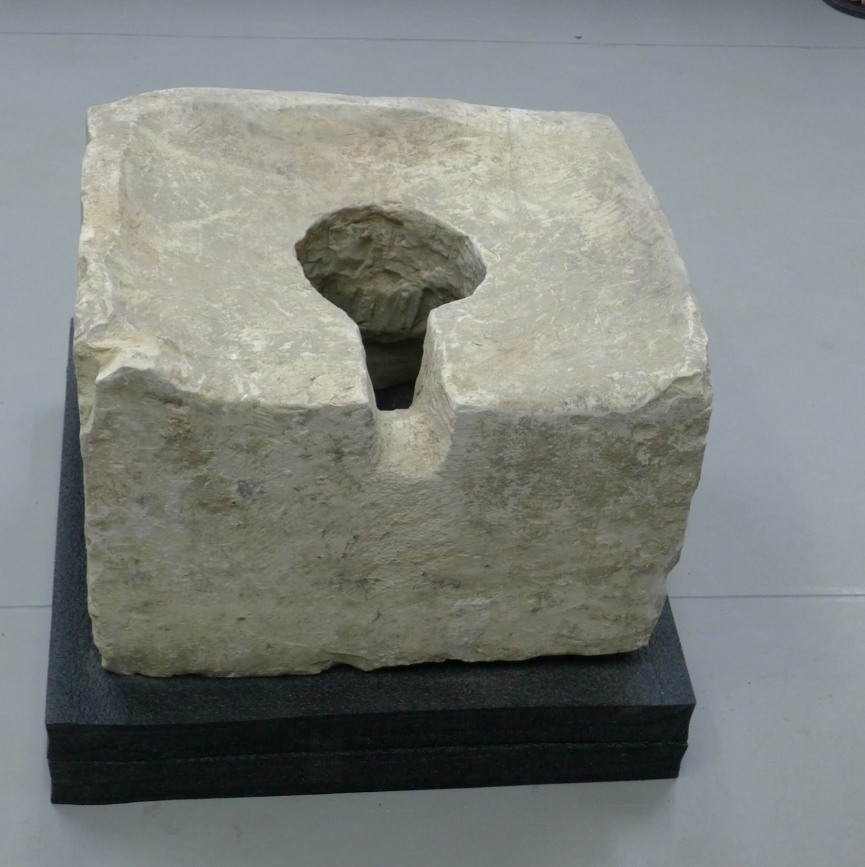Ancient Transformations: From Pagan Temples to Bathrooms
Discover how an ancient pagan temple became a public restroom. This exclusive excerpt from Rabbi Zamir Cohen's new book 'Biblical Archaeology III' sheds light on this unique history.
 Altar with deliberately broken horns
Altar with deliberately broken hornsThe Bible narrates a turbulent period during the era of the First Temple, where confusion spread among the Israelites. While many continued to worship Hashem in the Temple, others turned to idolatry. Kings on the throne were a mix of those loyal to Hashem and others enticed by idol worship. Some kings, it is said, engaged in both practices. Talmudic sources describe a compelling urge in those times to idolize wood and stone figures, a desire so overwhelming that the wise of Israel had to suppress it in the era of Ezra and Nehemiah through specific actions.
Powerful shifts occurred in those days between worship at the Temple in Jerusalem and the rampant idolatry. Some preferred offering sacrifices on altars built in their cities, despite the prohibition due to the standing presence of the Temple in Jerusalem.
Almost every righteous king of Israel combated the prevalent pagan worship, yet none were able to entirely eradicate it due to the strong allure of idols, particularly since idol-worshiping kings would often follow right after righteous ones. Therefore, some kings used unique and original methods to disgrace idol worship in the eyes of the people. One notable method was used by King Jehu, who turned a pagan temple into a public restroom to debase idol worship and eliminate its appeal from the hearts of Israelites. As documented: "And Jehu and Jehonadab, the son of Rechab, went into the house of Baal... they broke down the pillar of Baal and destroyed the house of Baal, making it a latrine, as it is till this day." Rashi interprets 'latrine' as a restroom.
However, among those who fought idolatry, King Hezekiah of Judah stands out as the greatest. He reigned in a later period, governing Jerusalem and other key cities like Lachish, known for its widespread idol practices. About King Hezekiah, the Bible states: "He removed the high places."
 Ancient city gate of Lachish
Ancient city gate of LachishPagan Temple or Restroom?
In 2015, during archaeological excavations by the Israel Antiquities Authority at Tel Lachish, the city gate complex was fully uncovered. Among the findings were impressive artifacts whose placement is illuminated only by biblical references.
The most astonishing discovery was what researchers call a "Gate Shrine," a pagan temple within one of the gate rooms where passersby would offer sacrifices.
However, what the archaeologists found was unexpected.
As the room was revealed, it was evident that its builders intended it for respected use since, unlike other rooms, its walls were coated in white plaster. But the room's contents disclosed that it was a pagan temple repurposed into a restroom by a king faithful to Hashem. Researchers suggest it was King Hezekiah!
"One reached the gate shrine via a staircase leading to a large room with a bench for placing offerings. A corner of the room revealed a passageway to a 'holy of holies.' In this chamber, we discovered two four-horned altars—an architectural style known for idolatry from that era—and numerous pottery artifacts like lamps, bowls, and stands.
Most interesting, the altar's horns were purposefully broken—likely evidence of religious reform credited to King Hezekiah as described in the Bible: "He removed the high places, shattered the pillars, and cut down the Asherah."
To further nullify the shrine's sanctity, besides breaking the altar's horns, they placed a toilet to defile it. In a corner, a stone carved like a toilet with a hole was found. Such stones are identified archaeologically as toilets.
 Toilet discovered in the pagan temple at Lachish
Toilet discovered in the pagan temple at LachishPlacing toilets to annul shrines is documented in the Bible with Jehu's destruction of Baal worship in Samaria [as noted above: "they destroyed the Baal's house and made it a latrine"], yet this is the first archaeological find confirming the practice.
Laboratory tests at the toilet site confirm it was never used, indicating its placement was symbolic. After its installation, the 'holy of holies' chamber was sealed until the city's downfall."
To purchase the book 'Biblical Archaeology III' from Hidabroot Shops, click here.
To purchase the Biblical Archaeology trilogy from Hidabroot Shops, click here.

